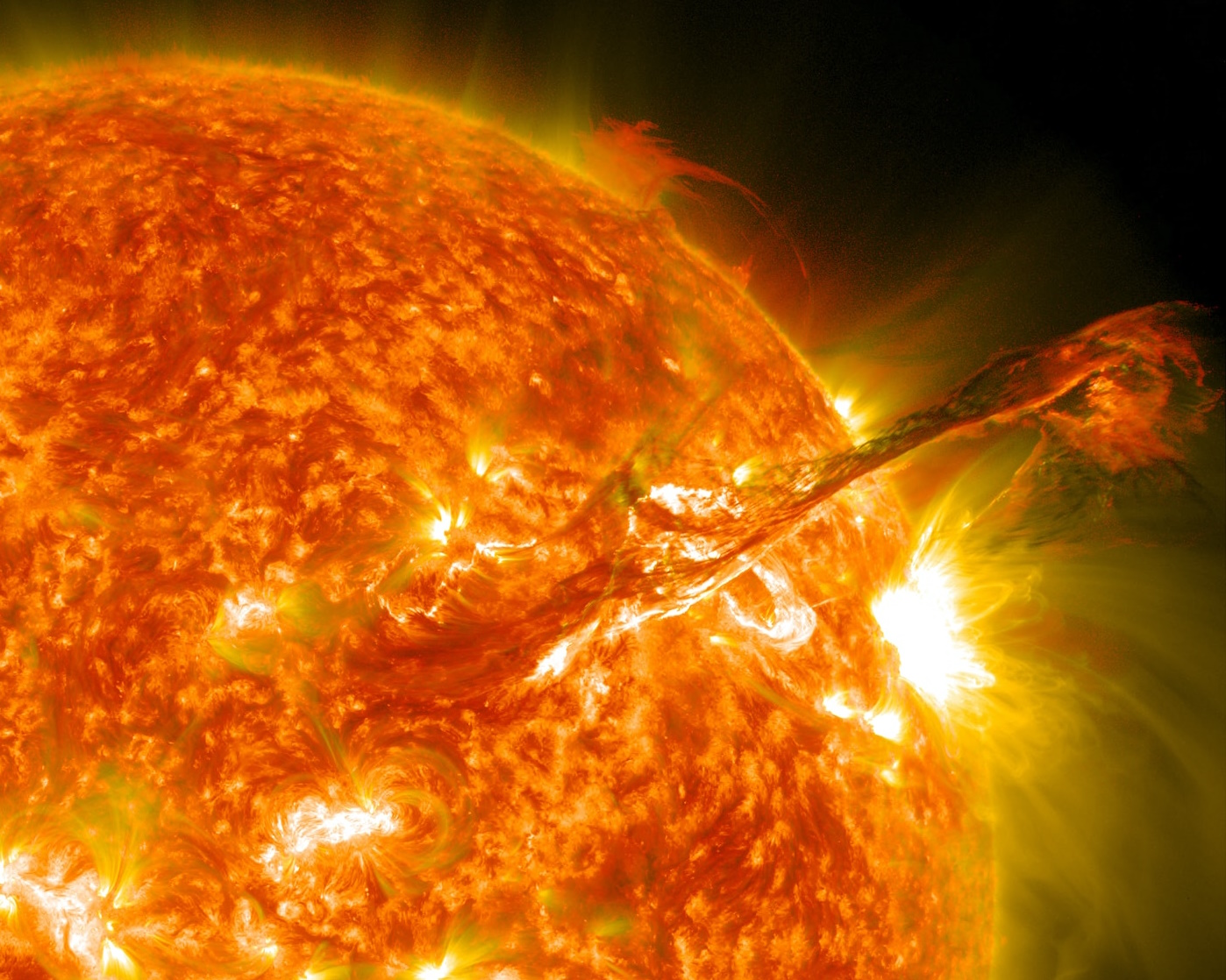A solar flare of the M9.8 class “thundered” on our star on November 29. It sent a huge amount of hot plasma towards the Earth — the so-called coronal mass ejection. This eruption, along with several others released on November 27, increase the likelihood of geomagnetic storms, which can cause changes in the Earth’s magnetic field, as well as affect the operation of communications and power grids.

However, fans of observing auroras should be delighted — these powerful flares cause auroras to glow over more southern latitudes. For example, recently the aurora could be observed in the north of Ukraine.
It is expected that the Earth will feel the first “impact” from the flares on November 30. However, according to forecasts from the US National Oceanic Atmospheric Administration (NOAA), the peak of the geomagnetic storm will be on December 1.
A Direct Hit! The impressive #solarstorm launched in the Earth-strike zone has been modeled by NASA. The storm is predicted to hit Earth by midday December 1. Along with two earlier storms already en route means we have a 1,2,3-punch. If the magnetic field is oriented correctly,… pic.twitter.com/XLCAbmjXZ7
— Dr. Tamitha Skov (@TamithaSkov) November 29, 2023
NOAA classifies geomagnetic storms on a scale from G1 to G5. A G1 class event is expected to occur on Thursday and a G2 class event on Friday. However, there is a possibility that both flares will lead to G3 class disturbances. Space weather physicist Tamitha Skov warns of a possible impact that may occur before December 1. She points to the possibility of a “cannibalistic” coronal mass ejection when a fast plasma clot catches up with a slower one, which leads to an even stronger geomagnetic storm.
Another look at the full hall coronal mass ejection launched by yesterday’s M9.8 solar flare. As expected, the plasma cloud is earth-directed and expected to arrive late on Friday, 1 December. Expect geomagnetic storm conditions after the cloud arrives. pic.twitter.com/kRSrG8rmCq
— SpaceWeatherLive (@_SpaceWeather_) November 29, 2023
Such conditions can lead to the expansion of the so-called aurora oval to lower latitudes. All this underlines the importance of monitoring space weather and the need to prepare for possible technological consequences, as well as for observations of auroras in places where they are extremely rare.
Earlier we reported on how a geomagnetic storm disabled an oil production rig.
According to Space
Follow us on Twitter to get the most interesting space news in time
https://twitter.com/ust_magazine


